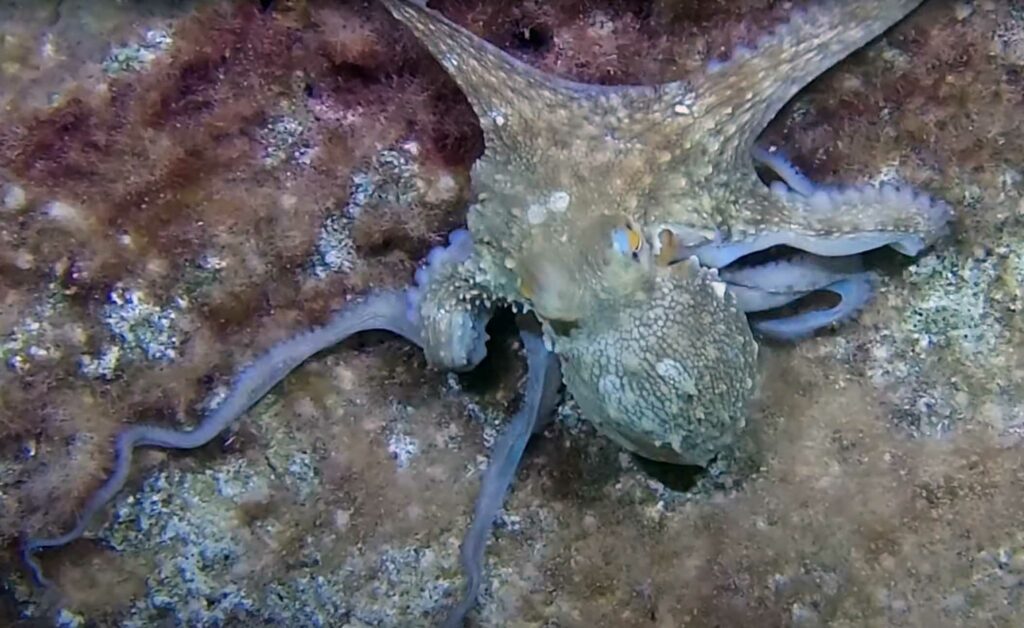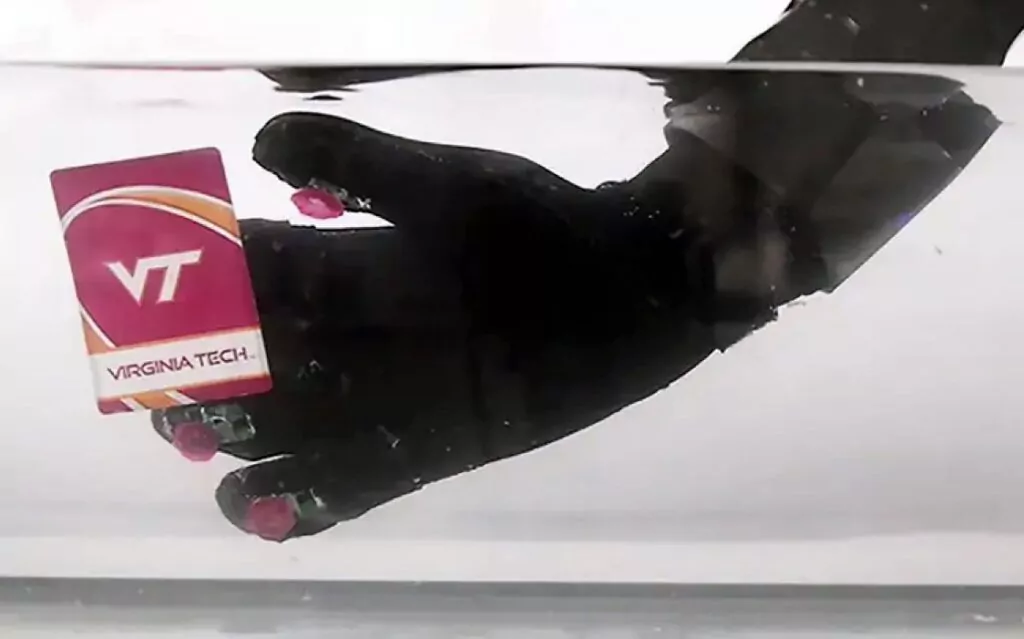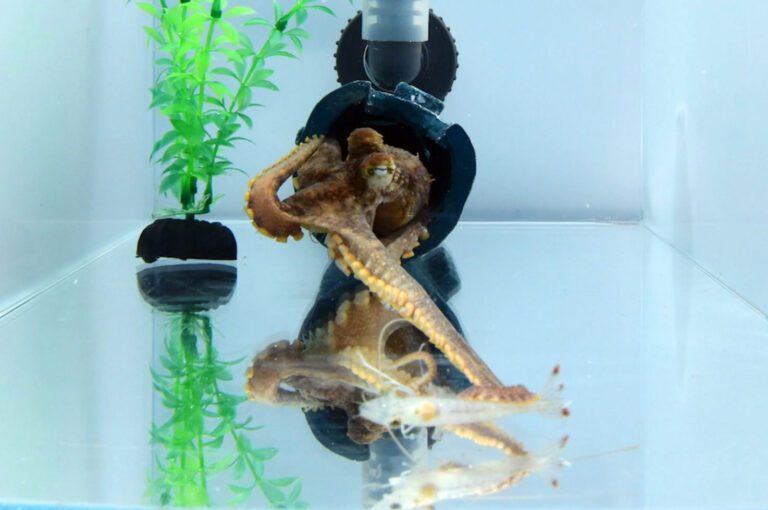Octopuses don’t use their eight arms at random, it seems – scientists have just discovered that they always deploy specific limbs when hunting, adjusting their tactics according to the type of prey.
“Normally when you look at an octopus for a short while, nothing is repeatable,” explained cephalopod specialist Trevor Wardill, an assistant professor in the University of Minnesota’s College of Biological Sciences. “They squirm around and just look weird in their exploratory movements.”
So the scientific team were surprised to find that octopuses’ hunting behaviour was in fact totally repeatable. They were investigating how the cephalopods use their arms to find clues to help develop next-generation soft robots.
California two-spot octopuses live for about two years and grow to the size of a tennis ball. The arms on each side of their bodies were numbered 1-4, and various types of prey introduced to their tanks.
Video recorded the octopuses emerging from their dens to lunge for the prey, revealing that they always attacked using the arms on the same side of their body as the eye used to spy the prey. And whatever the type of prey, they always deployed the second arm from the middle.
Refinements depended on the type of prey. The octopuses would pounce cat-like on slow-moving crabs, but were more circumspect with fast-moving shrimp, to avoid spooking them. Once the second arm had made contact with the shrimp, neighbouring arms 1 and 3 were used to secure it.
A next step is to study how neurons facilitate the octopuses’ arm movements. “Octopuses are extremely strong,” said Wardill. “For them, to grasp and open a door is trivial, given their dexterity.
“If we can learn from octopuses, then we can apply that to making an underwater vehicle or soft robot application. Underwater vehicles inspired by octopuses could play a crucial role in deep ocean exploration.” Funding and support was provided by the US Office of Naval Research, and the study is published in Current Biology,
Soft grip for divers
Also learning from octopuses’ arm actions, another team of US researchers have designed a glove that can grip objects securely under water but without risk of damaging them.
Underwater archaeologists and rescue divers are said to be among those who could benefit from the study led by Virginia Tech assistant professor Michael Bartlett, which has resulted in development of the Octa-Glove.
Humans are not naturally equipped to handle objects or people in slippery underwater environments, says Bartlett. “There are critical times when this becomes a liability. Nature already has some great solutions, so our team looked to the natural world for ideas. The octopus became an obvious choice for inspiration.”

Plunger-shaped octopus-arm suckers provide a powerful snatching ability, he says. Once the sucker’s wide outer rim has sealed on an object, muscles contract and relax the cupped area behind the rim to add and release pressure. Engaging many suckers at once creates a powerful adhesive bond.
“When we look at the octopus, the adhesive certainly stands out, quickly activating and releasing adhesion on demand,” says Bartlett. “What is just as interesting, though, is that the octopus controls over 2,000 suckers across eight arms by processing information from diverse chemical and mechanical sensors.
“The octopus is really bringing together adhesion tunability, sensing and control to manipulate underwater objects.”
Bartlett’s team re-imagined the suckers as compliant rubber stalks capped with soft, actuated membranes. These can activate a reliable attachment to objects on both flat or curved surfaces, using only light pressure.
The suckers and an array of optical proximity sensors are connected through a microcontroller to mimic the octopus’s nervous and muscular systems.

“By merging soft, responsive adhesive materials with embedded electronics, we can grasp objects without having to squeeze,” says Bartlett. “It makes handling wet or underwater objects much easier and more natural. The electronics can activate and release adhesion quickly. Just move your hand toward an object, and the glove does the work to grasp. It can all be done without the user pressing a single button.”
The researchers also see roles for the Octa-Glove in the field of soft robotics for underwater gripping, user-assisted technologies and health care, and assembling and manipulating wet objects during manufacturing processes. The study is published in Science Advances.
Also on Divernet: Jumping Genes Solve Octopus And Seadragon Puzzles, Time To Consider Octopus Feelings, Octopuses Dream – But What About?, Divers, Look Out For Gloomy Octopus Cities

